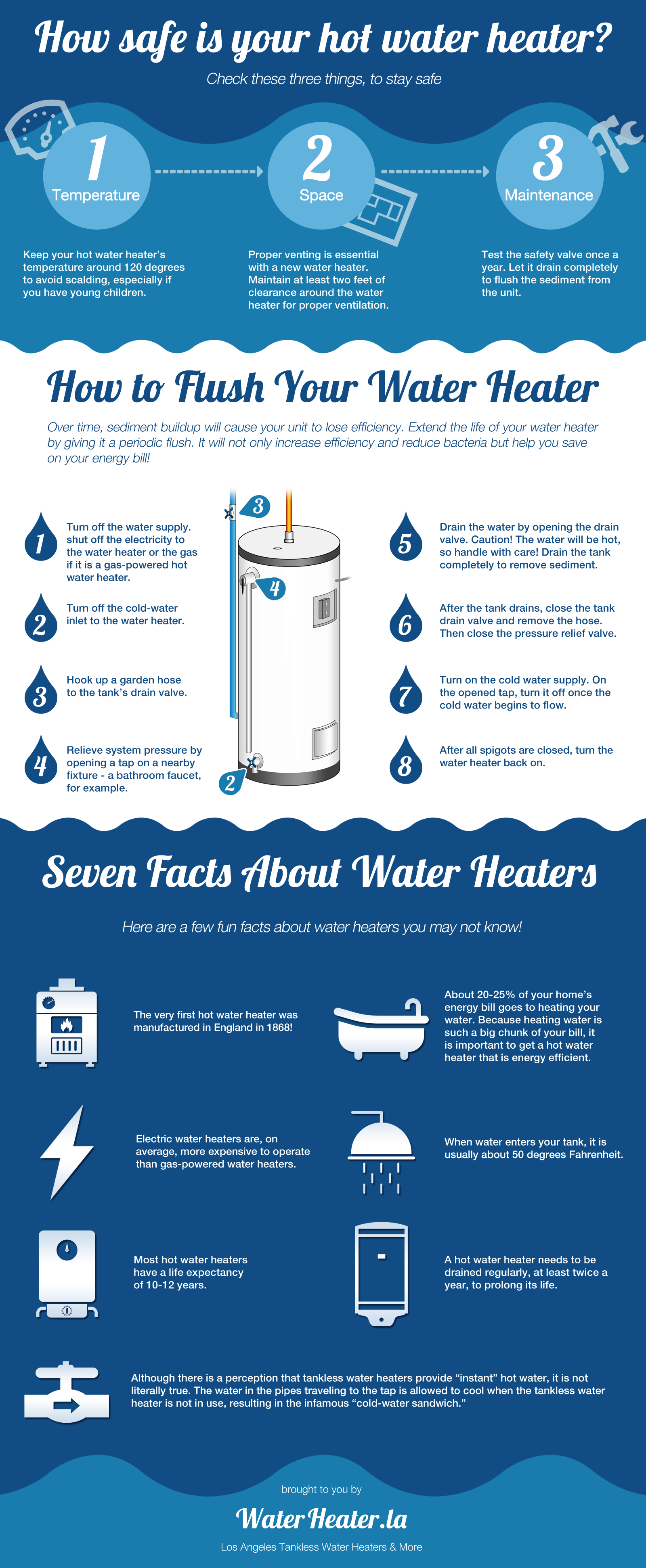We give little thought to our water heaters, that is until something goes wrong with them. Here is an infographic that looks at three things we can check to ensure safety and proper water heater operation. It also provides details on how to periodically flush your water heater and finally lists some fun facts about them.
If you are in the metro Phoenix area and are in need of water heater replacement, give us a call.
[Click image for full size version]
How Safe Is Your Water Heater?
Check these three things to stay safe:
1. Temperature – Keep your hot water heater’s temperature around 120 degrees to avoid scalding, especially if you have young children.
2. Space – Proper venting is essential with a new water heater. Maintain at least two feet of clearance around the water heater for proper ventilation.
3. Maintenance – Test the safety valve once a year. Let it drain completely to flush the sediment from the unit.
How To Flush Your Water Heater
Over time, sediment buildup will cause your unit to lose efficiency. Extend the life of your water heater by giving it a periodic flush. It will not only increase efficiency and reduce bacteria but help you save on your energy bill.
1. Turn off the water supply and shut off the electricity to the water heater or the gas if it is a gas-powered hot water heater.
2. Turn off the cold-water inlet to the water heater.
3. Hook up a garden hose to the tank’s drain valve.
4. Relieve system pressure by opening a tap on a nearby fixture – a bathroom faucet for example.
5. Drain the water by opening the drain valve. Caution! The water will be hot, so handle with care! Drain the tank completely to remove sediment.
6. After the tank drains, close the tank drain valve and remove the hose. The close the pressure relief valve.
7. Turn on the cold water supply. On the opened tap, turn it off once the cold water begins to flow.
8. After all spigots are closed, turn the water heater back on.
Seven Facts About Water Heaters
Here are a few fun facts about water heaters you may not not know.
- The very first water heater was manufactured in England in 1868.
- Electric water heaters are, on average, more expensive to operate than gas-powered water heaters.
- Most hot water heaters have a life expectancy of 10-12 years.
- About 20-25% of your home’s energy bill goes to heating your water.
- Because heating water is such a big chunk of your energy bill, it is important to get a hot water heater that is energy efficient.
- When water enters your tank, it is usually about 50 degrees Fahrenheit.
- A hot water heater needs to be drained regularly, at least twice a year, to prolong its life.
- Although there is a perception that tank-less water heaters provide “instant” hot water, it is not literally true. The water in the pipes traveling to the tap is allowed to cool when the tank-less water is not in use, resulting in the infamous “cold-water sandwich.”






